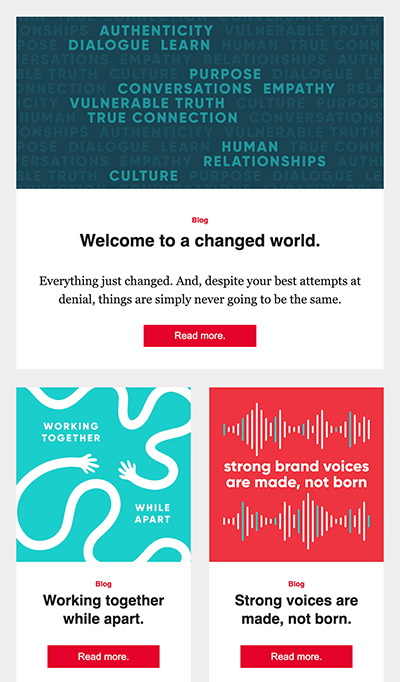Budget for strategy, then tactics (Not the other way around)
The world is changing far more rapidly than your planning cycles. Be bold.

As you prepare your 2020 marketing plan, we want to help you see things a little more clearly. Where do you start? What should you prioritize? How do you plan the right budget? In this series, we give you a look behind the curtain to how we approach things here at Phire Group.
Take a look at our other 2020 Vision posts:
Adding One Sentence to Your Website Can Make a Big Impact in 2020.
Don’t Be Afraid of the Unknown: Plan for What’s to Come
A Content Marketing Roadmap with Zero Buzzwords
I don’t want to assume you’re doing it wrong. But you’re probably doing it wrong.
And it’s not your fault.
When planning 2020 marketing budgets, experience shows that organizations will make a critical error: they generally begin with a list of tactics. Instead of focusing on the bigger questions of who and why, budget pressures force them to immediately start planning the tangible what. In the end, next year closely resembles this year, and results and expectations remain relatively flat.
It’s the classic case of tactics leading strategy.
Like I said, it’s not your fault. It’s simply built into the design of organizations, budgets, and planning cycles. The structure and cadence of budgets in most organizations force their hand: Status quo becomes easy and safe. Don’t rock the boat and simply stay the budgetary course, or you might risk losing it. And tangible things are simple to sell to the C-suite. This seems rational for a while, until several years pass and things haven’t been truly scrutinized in some time.
That’s why we love to plan alongside our clients. Taking a fresh look. Seeing the bigger challenges, and then thinking of ways to fulfill them. Within budget. The resulting plan is more intentional, more choreographed, and likely more measurable (which, of course, will help when planning for 2021). You may finally have the evidence you need to ask for a sizable increase in the future. The world is changing far more rapidly than your planning cycles. Be bold. Pretend like you’re starting over from scratch … what would you do? There is something liberating about this thought. It opens up everything — not just small percentages of differences here and there.
As you go through this larger-picture process, here are a few common-sense tips:
- Start with the goal. What does success look like a year from now?
- Frame it in tangible numbers. What KPIs will indicate success?
- Determine who/where this is going to come from. Get very specific.
- As you segment, create personas for each. Who are they? What messages will they respond to? How are they influenced?
- Map a journey for each based on their experience, from unknown customer to brand evangelist.
- Now — and only now — should you be thinking about tactics to get there.
- Once you determine all that is needed, break it down, price it out, and then go back through looking for areas where you’ll need to simplify/eliminate.
Sound easy? I hope not. This is the budgetary discipline that only a few possess, but those who do will be poised to think big picture while considering small details. Both boldly in plan and rationally in execution. And be ready to make rapid decisions as they improve the practice for the next year. And the next.
Here are some hard questions to ask yourself right now:
- Are you creating a budget based on an opportunity? Or the fear of not being/doing what you’ve always done?
- Is your strategy designed to reach the right audience? At the right time?
- Is your current plan measurable? Can you connect it to important, business-lifting KPIs? Or is it merely affecting ego-driven KPIs?
- Are you crafting things to be evergreen or infrastructural in nature? Or is your plan fully disposable year to year?
Need help working through it? That’s why we’re here. When it comes to rethinking, challenging, and rebuilding a powerful, flexible, sustainable, and measurable plan … well … that’s our wheelhouse.


